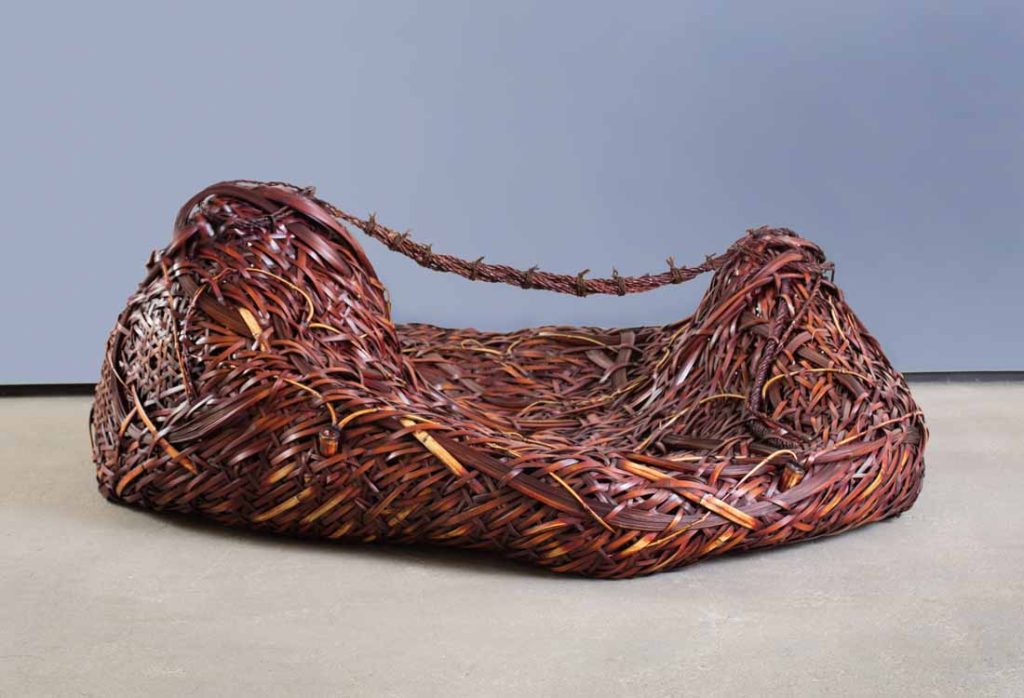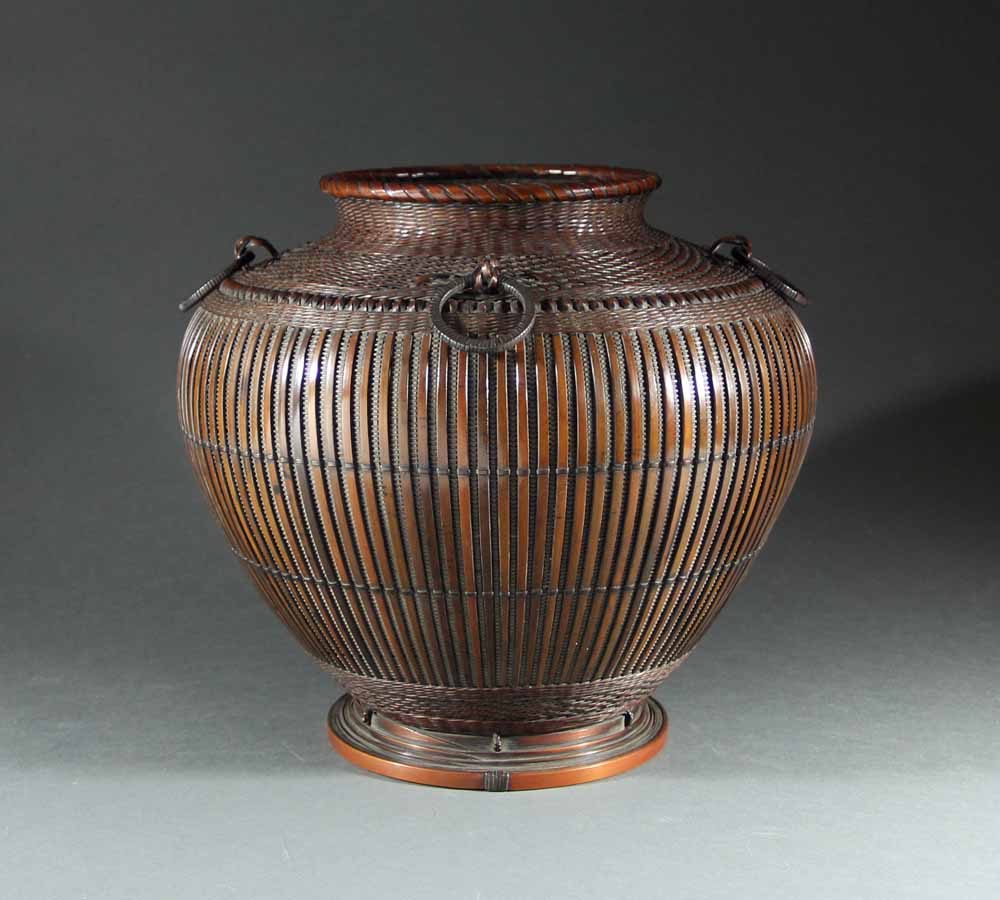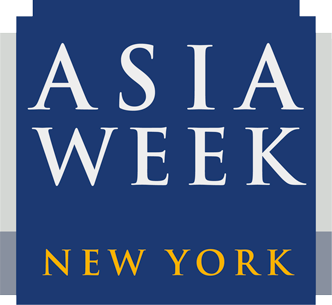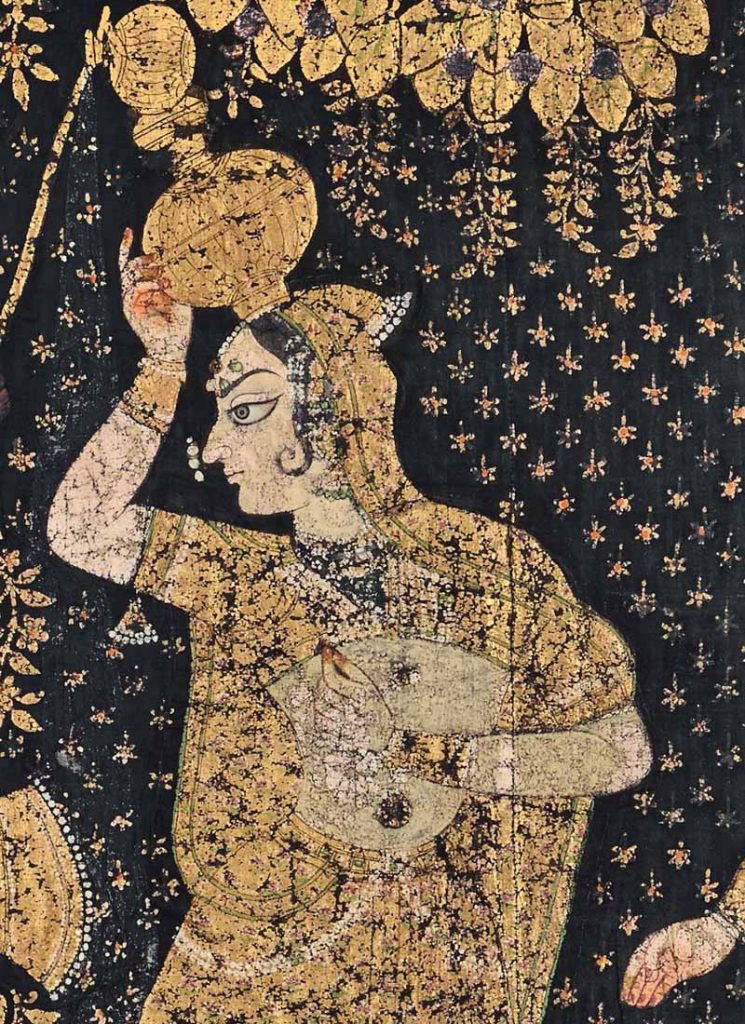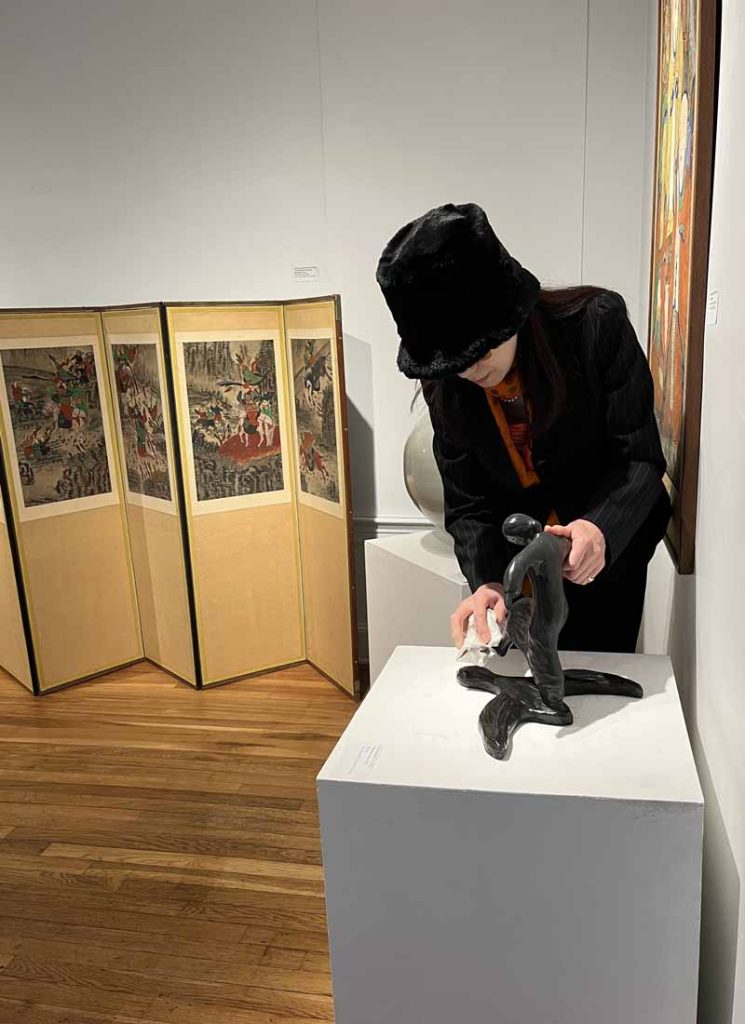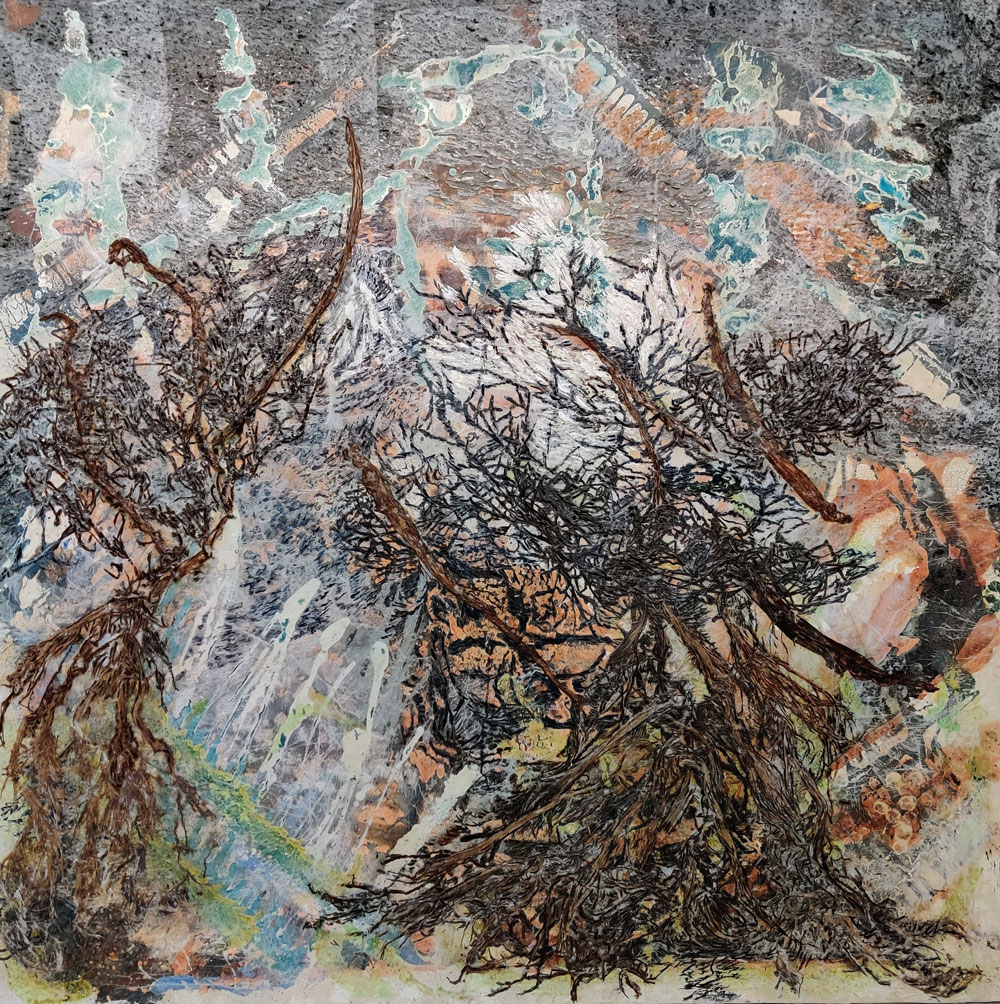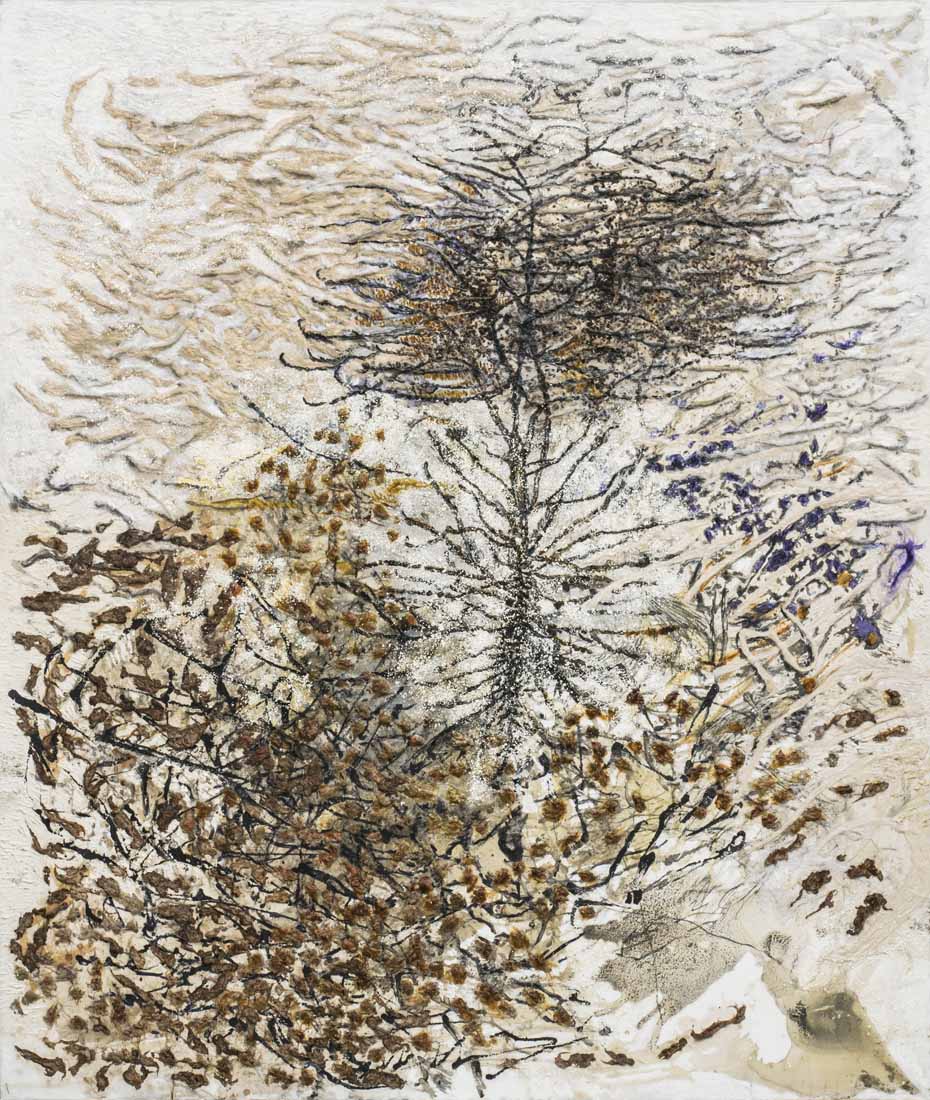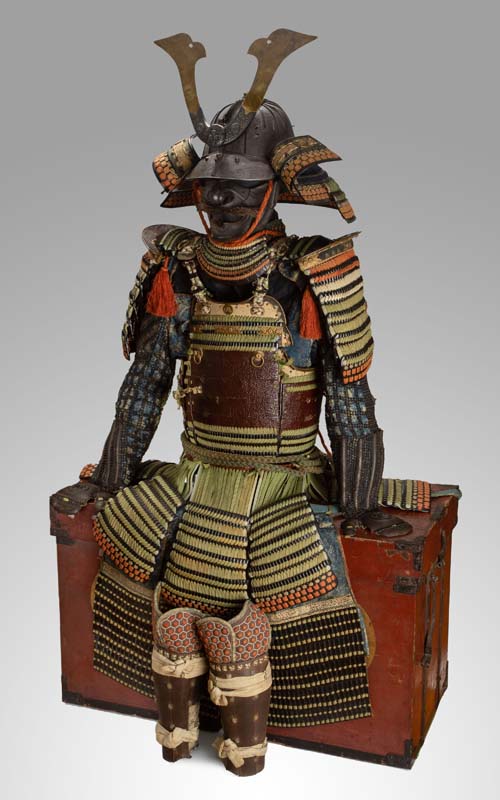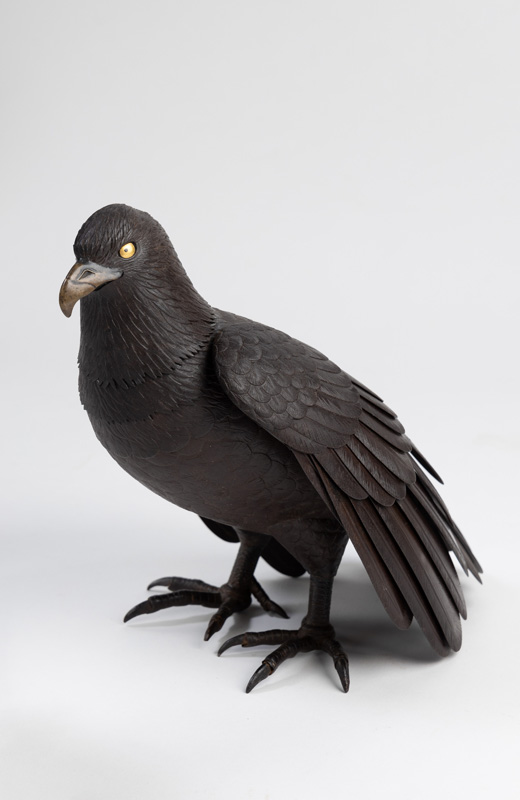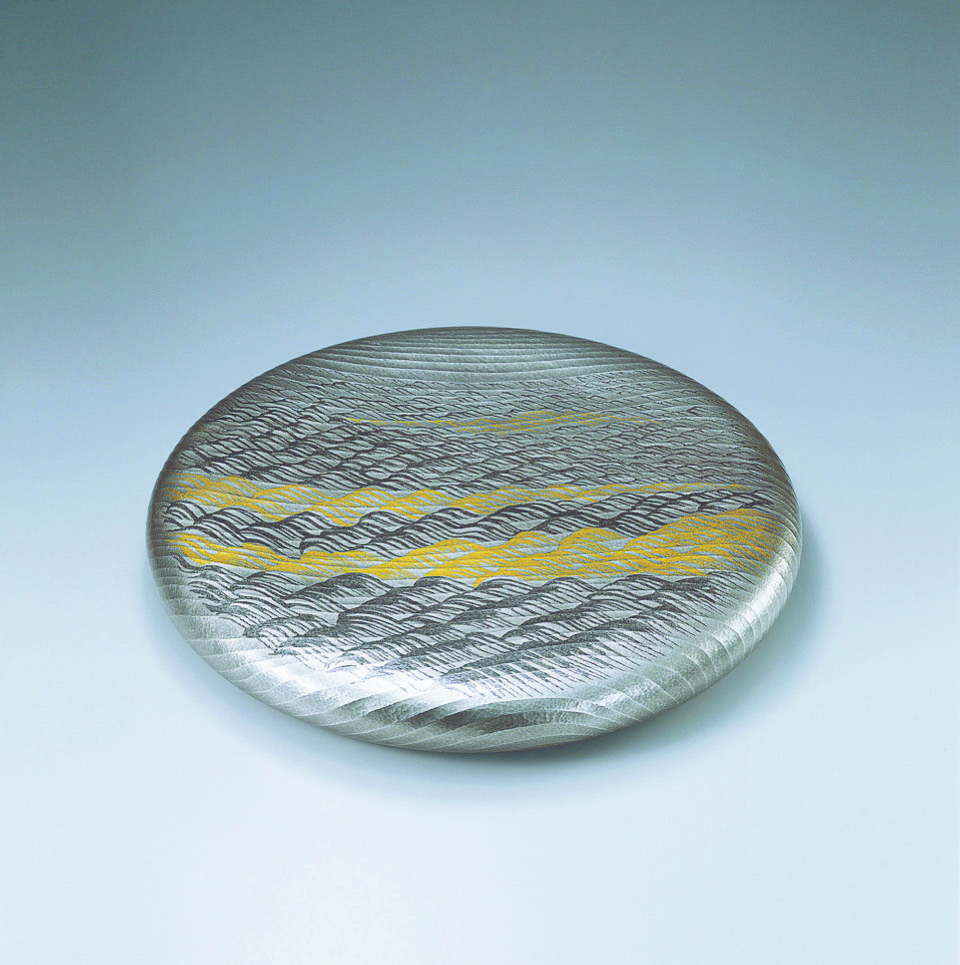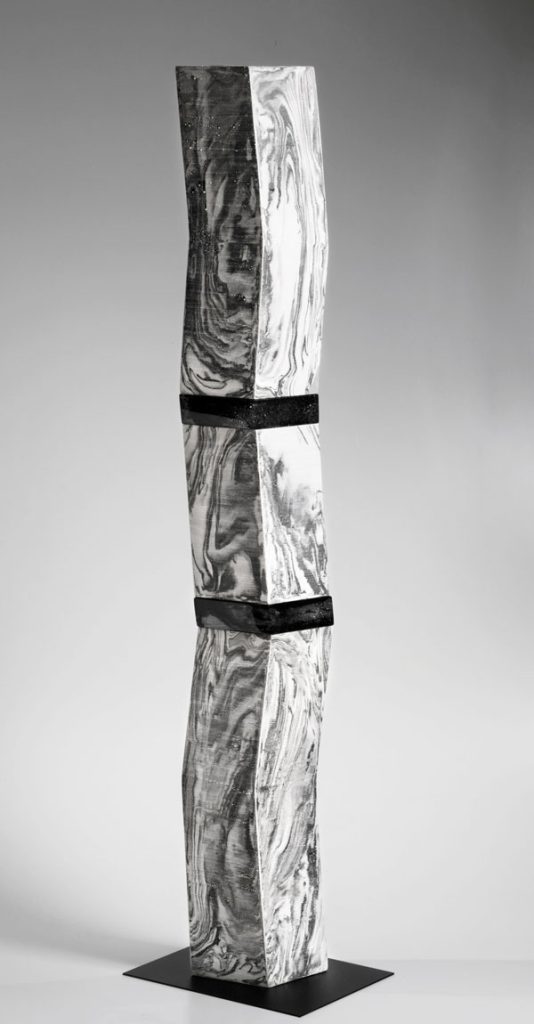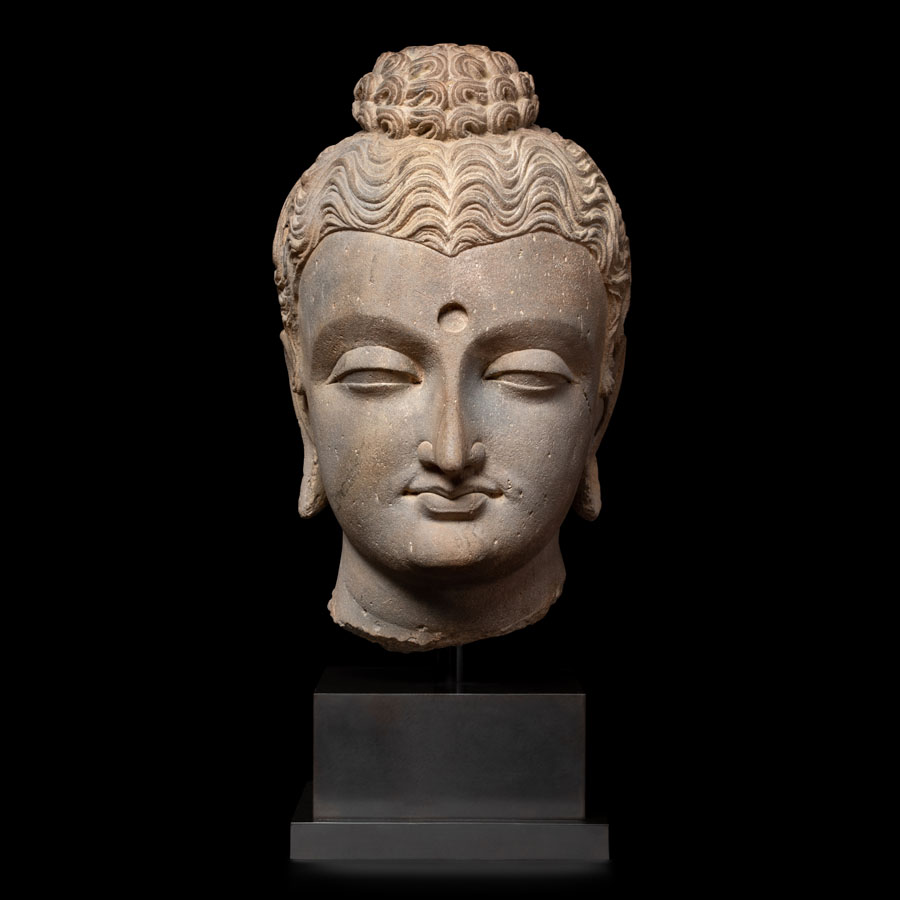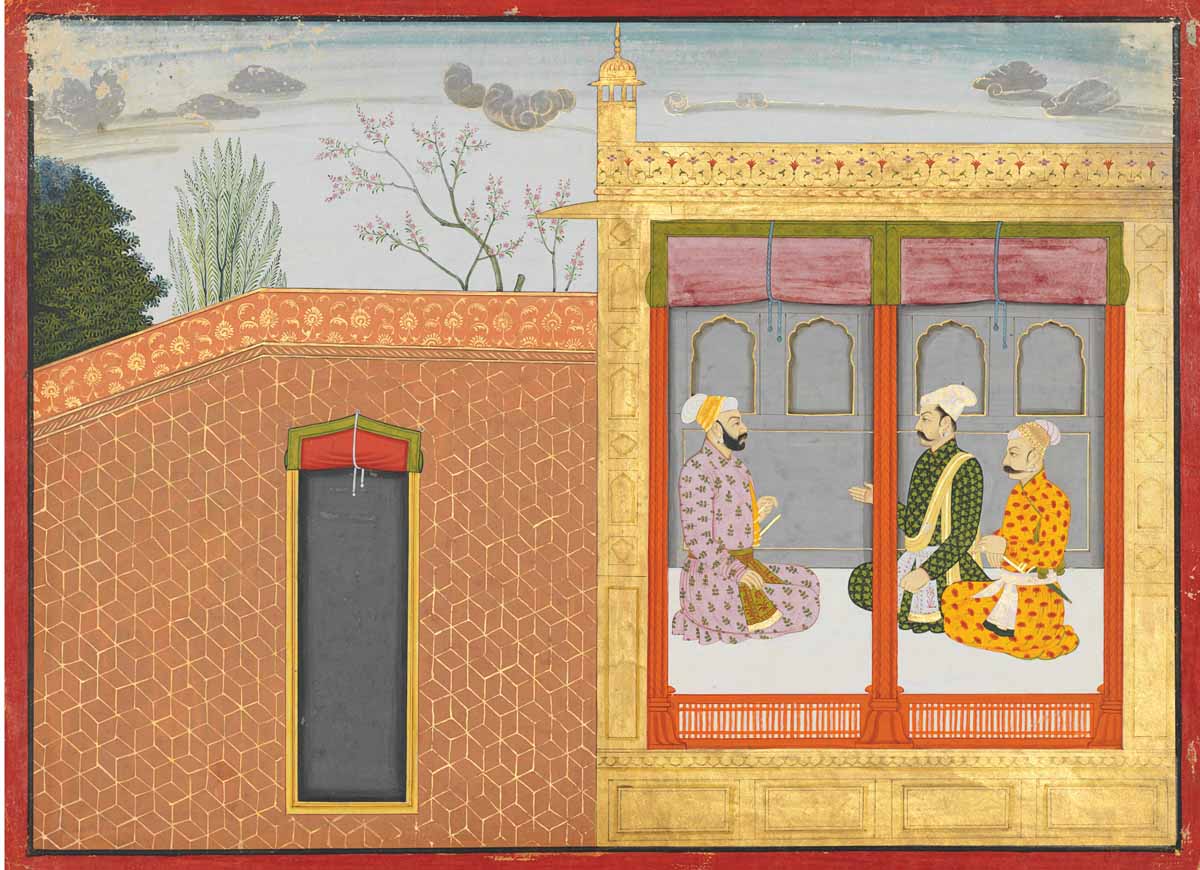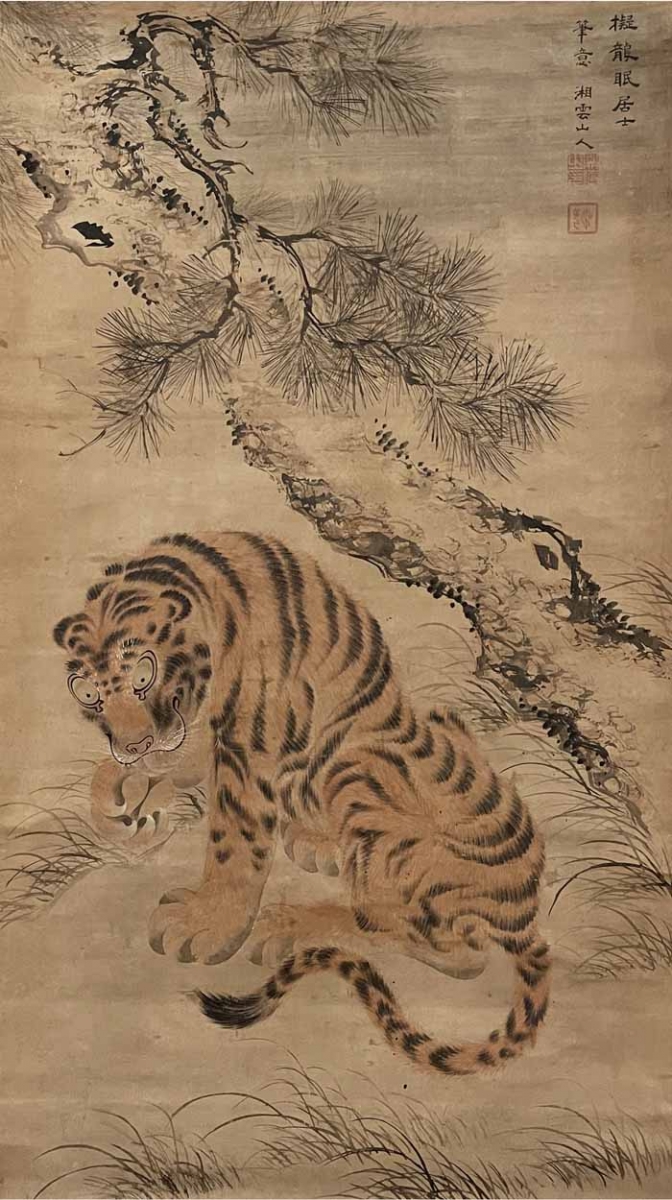Kondō Takahiro (b. 1958), Monumental standing zigzag monolith with pâte de verre cast clear and black glass titled, “Wave”, 2021, marbleized porcelain, “silver mist” overglaze, cast glass, removable stainless-steel base, 60 5/8 x 10 1/4 x 6 3/4 in.
Kondō Takahiro: Making Waves, Joan B Mirviss LTD
March 16-April 22, 2022
After six years of planning, acclaimed contemporary artist Kondō Takahiro (b. 1958) presents his latest solo exhibition at Joan B Mirviss LTD this spring for Asia Week New York. These thirty new sculptures in swirling whirlpools of black, gray, and white marbleized porcelain glisten with ‘silver mist’ that resembles morning dew. His signature gintekisai (silver mist) overglaze technique finds new expression here as he plays with scale in striking geometric forms that catch light from daring angles. In a departure from his earlier “Wave” artworks, Kondō incorporates a whiter clay into his marbleization (nerikomi) technique. Its combination with the darker clay that seemingly flows down the surfaces creates an ink-on-paper effect, transforming his sculptures into what he calls “porcelain ink paintings”. From major zig-zagging rhomboidal monoliths to glass-capped vessels to wondrous teabowls, the incomparable skill and singular creativity of master artist Kondō Takahiro is on full display in Making Waves.
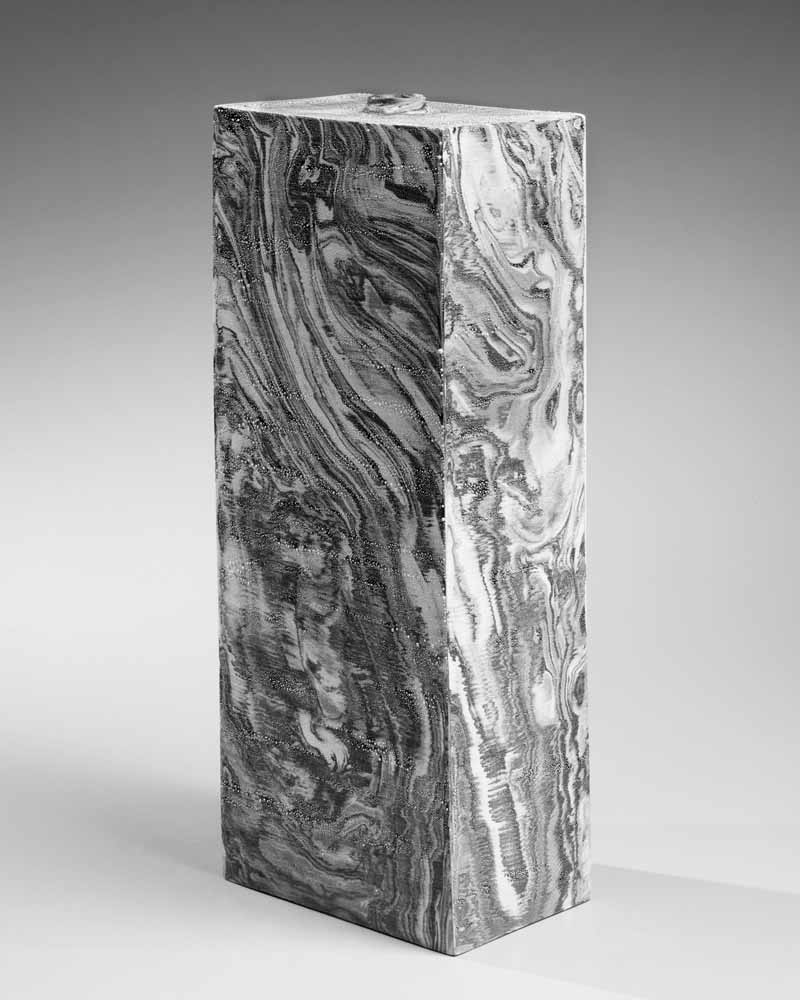
Kondō Takahiro (b. 1958), A standing rectangular marbleized form titled, Nami; “Wave”, 2021, marbleized porcelain, “silver mist” overglaze 18 1/8 x 7 x 4 1/2 in.
As an artist, Kondō Takahiro has always been focused on water, especially as a life-giving and spiritual force. However, following the devastating 3.11 Tōhoku earthquake and tsunami, Kondō gained new perspective on the dichotomy of water’s creative and destructive powers. Reflecting on the many aspects of water since then, Kondō has returned in Making Waves to this inherent tension. On some of his smaller table-top forms, the blending of the clay in pooling thin layers of gray and black, set against the white ground, conjures gentle, lapping tides. On larger sculptures, the swirling layers plummet downwards, evoking powerful rapids and crashing waterfalls; additionally, the capping or angled joining of large porcelain sections with clear and black cast-glass punctuated with air bubbles suggest floating seaweed.
ZOOM online panel discussion
MAKING WAVES
with artist Kondō Takahiro
March 17, 2022 at 5pm EDT
In celebration of his latest exhibition at Joan B Mirviss LTD, the artist Kondō Takahiro will join us live from Kyoto for an in-depth discussion with a panel of experts. Reflecting on the many aspects of water, Kondō's latest striking sculptures are masterful explorations of his marbleized clay (nerikomi) technique married with his signature “silver mist” (gintekisai) overglaze. Reimagining clay's relationship to another classical art form, ink painting, Kondō finds resonance in their shared origins in water.
This event brings the artist together in conversation with design historian and curator Glenn Adamson, former Director of the Museum of Arts and Design, New York, and scholar and curator Joe Earle, formerly of the V&A, MFA Boston, and Japan Society. They will discuss his creative process, the challenges posed by his sculptures, and his fascinating legacy.
PANELISTS:
KONDŌ TAKAHIRO, artist
GLENN ADAMSON, independent curator based in New York and formerly Director at the Museum of Arts and Design, New York
JOE EARLE, Senior Consultant, Japanese Art, Bonhams
CAROL HORVITZ, art collector and museum patron
Moderated by JOAN MIRVISS
Read more and register, click here
Exhibiting in tandem with Kondō Takahiro: Making Waves is INKstudio's show of contemporary ink paintings, Bingyi: Land of Immortals, which was conceived as a collaborative event. For more information, click here
Joan B Mirviss gallery website is rich with additional information about the artist and this exhibition, a preview video, and recent press coverage. For more information, click here
